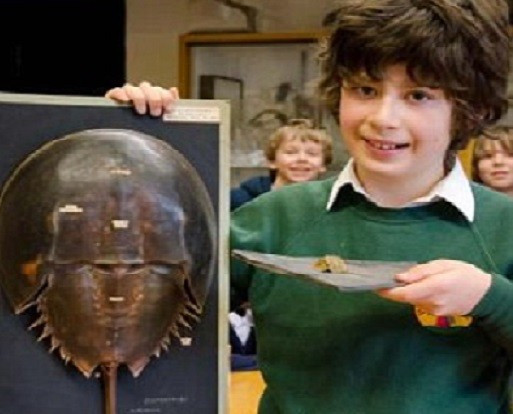Oxford Schoolboy Discovers 300-Million-Year-Old Fossil Footprints in Cornwall

A ten-year-old Oxford schoolboy has discovered a set of fossil footprints that are more than 300 million years old.
Bruno Debattista was on holiday in Cornwall, on the south-west coast of England, when he came across a piece of shale rock containing a fossilised imprint.
On returning home, Debattista took it to an after-school club at Oxford University's Museum of Natural History.
University experts identified what appear to be tracks left by horseshoe crabs that inhabited Britain's coastal area over 320 million years ago.
"Footprints of this age are incredibly rare and extremely hard to spot, so we were amazed when Bruno produced them," Chris Jarvis, education officer at the museum and organiser of the after-school club, told the Herald Scotland.
"Still more impressive is the fact Bruno had a hunch they might be some kind of footprints."
The museum believes Bruno's fossil shows the marks left by a pair of mating horseshoe crabs.
The ten-year-old was chosen for the club by his teachers, as he showed a keen interest in nature.
"Unfortunately, the excitement and motivation that many children instinctively feel for studying nature is often lost during their teenage years as it is seen as 'uncool' or a bit 'weird', and science can become text-book oriented and exam-driven during secondary school," Jarvis told the Mail Online.
"The club is our attempt to encourage children to value and extend their skills and knowledge and to follow their interests.
"I hope it is helping to create a group of kids that will continue to share their interests into their teenage years and beyond."
Debattista, who attends Windmill Primary School in Oxford, has decided to donate the fossil specimen to Oxford University's Museum of Natural History collection.
A History of Horseshoe Crabs
The earliest horseshoe crab fossils date to the late Ordovician period, roughly 450 million years ago.
Named after the one-eyed Cyclops of Greek mythology, the horseshoe crab is not a crab at all. It is closely related to scorpions and spiders, and has been in existence since before dinosaurs roamed the earth.
The oldest known horseshoe crab fossil is at the University of Oslo's Palaeontology museum.
© Copyright IBTimes 2025. All rights reserved.






















